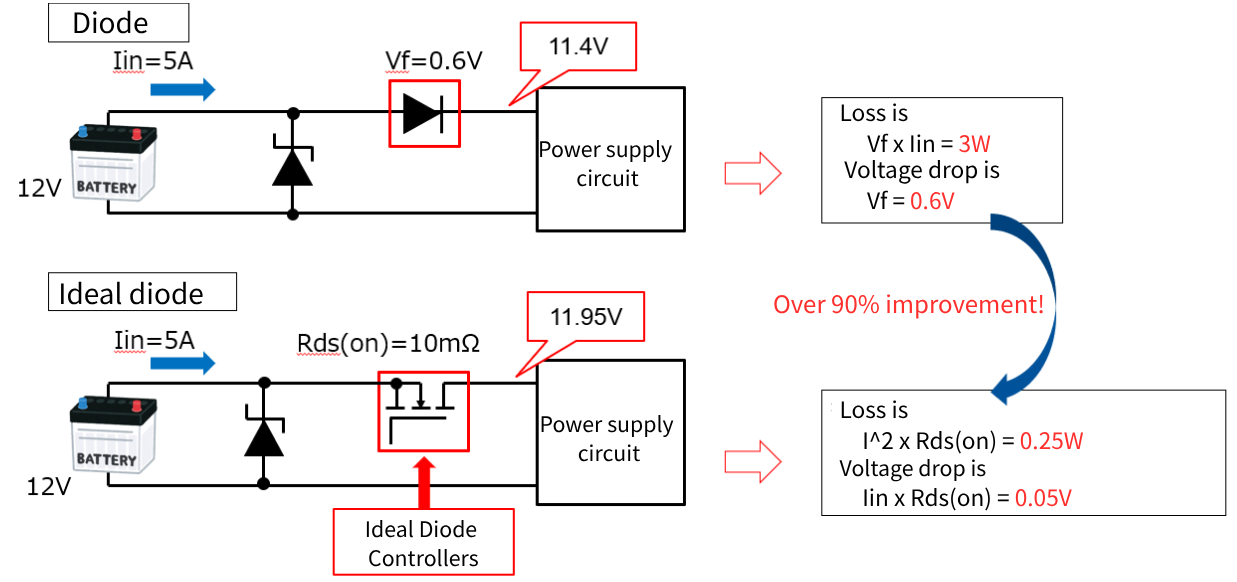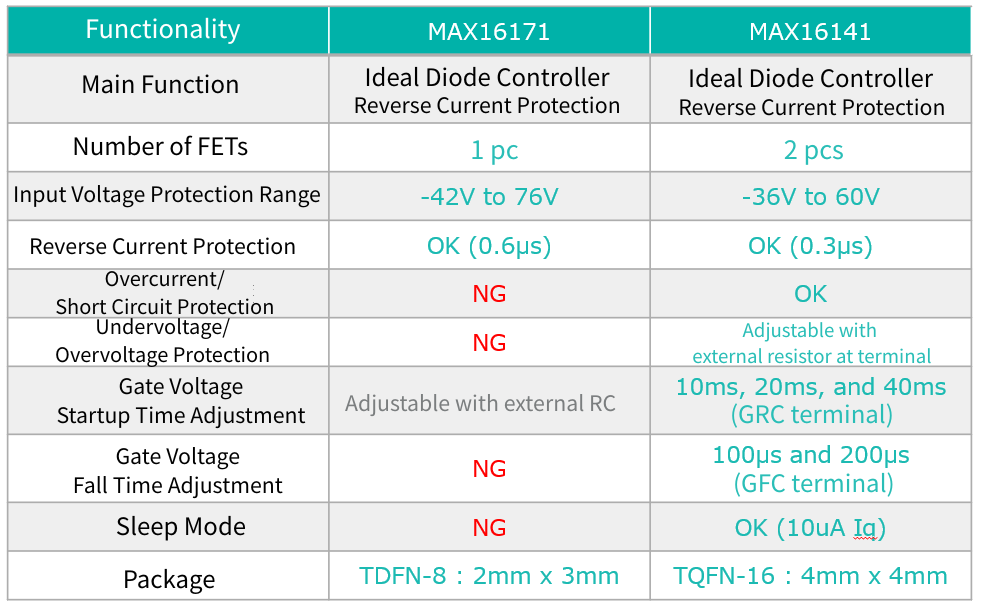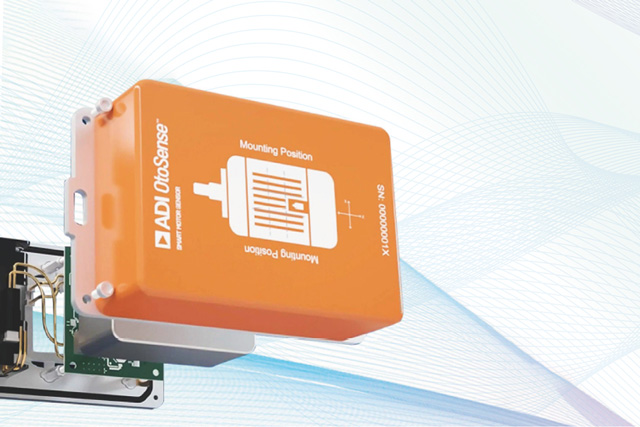
- Analog Devices, Inc.
- NEXT Mobility
- ICT and Industrial
Addressing the Issue of Increased Loss in Reverse Polarity Protection Diodes
Units such as ECUs operate using power supplied by a battery, but there is a risk of accidentally connecting the battery with reversed polarity.
If the battery is connected in reverse, current flows in the opposite direction, which can damage the unit. To prevent this, protective measures are put in place.
Because diodes only allow current to flow in one direction, a typical solution is to connect a diode in series between the battery and the unit for reverse polarity protection.
However, during normal operation, current constantly flows through this diode, which leads to continuous power loss calculated as the diode's forward voltage (Vf) multiplied by the current (Iin). Figure 1
In recent years, current consumption in units like ECUs has been increasing. As a result, diode losses have also grown, leading to problems such as diode heating and reduced overall system efficiency.
Solving the Problem with Ideal Diode Controllers MAX16171 / MAX16141
To address this issue, we introduce the ideal diode controllers MAX16171 and MAX16141, developed by the former Maxim.
These controllers replace the traditional reverse polarity protection diode by controlling the ON/OFF state of a MOSFET, preventing reverse current flow and resolving the associated issues.
While the MOSFET also conducts current during normal operation and incurs some loss, this loss—calculated as Rdson multiplied by the current (Iin)—is significantly lower than that of a diode, leading to reduced heat generation and improved system efficiency. Figure 1

Figure 1. Comparing Reverse Polarity Protection Diodes and Ideal Diodes
The MAX16171 provides an inexpensive replacement for reverse polarity diodes using a single FET. In contrast, the MAX16141 utilizes two FETs in a back-to-back configuration. This configuration offers a more robust replacement, providing protection against forward overcurrent and overvoltage in addition to reverse polarity protection.
Table 1. Comparison Table by Solution
To address this issue, we introduce the ideal diode controllers MAX16171 and MAX16141, developed by the former Maxim.
These controllers replace the traditional reverse polarity protection diode by controlling the ON/OFF state of a MOSFET, preventing reverse current flow and resolving the associated issues.
While the MOSFET also conducts current during normal operation and incurs some loss, this loss—calculated as Rdson multiplied by the current (Iin)—is significantly lower than that of a diode, leading to reduced heat generation and improved system efficiency. Figure 1
| Reverse Polarity Protection Diode | MAX16171 | MAX16141 | |
|---|---|---|---|
| Power consumption | × | ◎ | ◎ |
| System Cost | ◎ | ◯ | △ |
| Overcurrent / Overvoltage Protection | × | × | ◯ |
Both the MAX16141 and MAX16171 feature very fast response times, quickly blocking reverse current upon detection to safely protect the system.
The MAX16141 also includes a unique feature called Sleep Mode. (Figure 2)
During sleep mode, the back-to-back MOSFETs are turned off. This allows the MAX16141, while consuming only 10 uA itself, to supply up to 400 uA of current from the battery to the downstream circuit.
-

Figure 2. MAX16141 Sleep mode
-

Table 2. Function Comparison Table
Inquiry
Related Product Information

Low-Noise Switching Regulator Suitable for Power Supply in RF Products
Silent Switcher 3 is the latest switching regulator technology that achieves low low-frequency noise and fast load response.
- Analog Devices, Inc.
- ICT and Industrial

AI-Powered Smart Motor System for Motor Diagnostics
With the ADI OtoSense Smart Motor Sensor, let AI handle everything from threshold setting to analysis, diagnostics, and root cause identification—preventing downtime and avoiding losses.
- Analog Devices, Inc.
- NEXT Mobility
- ICT and Industrial
- Smart Factories and Robotics

New LTspice③ Parametric Analysis and Tolerance Analysis
LTspice is a free SPICE simulator provided by Analog Devices. This article introduces methods for parametric and tolerance analysis, as well as how to use dot commands.
- Analog Devices, Inc.
- NEXT Mobility

New LTspice②: How to Use SPICE Models
LTspice is a free SPICE simulator provided by Analog Devices. This article introduces how to obtain demo circuits and various models.
- Analog Devices, Inc.
- NEXT Mobility

New LTspice Complete Guide ①
LTspice is a free SPICE simulator provided by Analog Devices. This article explains the updates and performance improvements in the latest version, LTspice24.
- Analog Devices, Inc.
- NEXT Mobility

Introduction to Wireless Gesture Sensors (Use Cases for Analog Devices Products)
The wireless gesture sensor developed by NEXTY Electronics enables remote control of home appliances and display devices at low cost.
- Analog Devices, Inc.
- NEXT Mobility
- ICT and Industrial
- Smart Factories and Robotics

